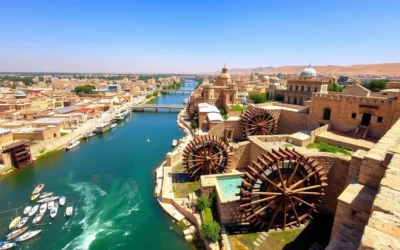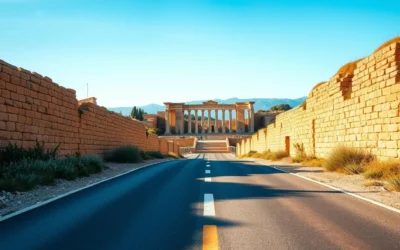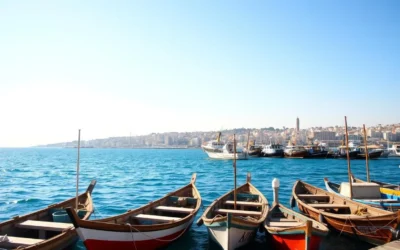Did you know that Homs is one of the oldest continuously inhabited cities in the world, with evidence of human settlement dating back to 2300 BCE? Known as “Emesa” during the Roman period, this historic Syrian city was once famous for its temple to the sun god Elagabalus and has been a crossroads of civilizations for millennia. Today, despite years of conflict, Homs is slowly rebuilding and once again welcoming visitors eager to explore its rich cultural heritage and warm hospitality.
Getting to Homs & Planning Your Journey
Most travelers reach Homs from Damascus, which serves as the main entry point to Syria. The journey from Damascus to Homs covers approximately 162 kilometers and takes about 2-3 hours by car. When planning your trip to Syria, it’s essential to organize your visit through a local tour operator, as independent travel is currently restricted.
For international travelers, the most common route is to fly into Beirut, Lebanon, and then travel overland to Damascus. From there, transportation to Homs can be arranged through your tour operator. The border crossing from Lebanon to Syria typically takes 2-4 hours depending on traffic and processing times.
Ready to Plan Your Journey?
Find the best flight options to Beirut for your Homs adventure:
Visa Requirements
All visitors to Syria require a visa. As of 2023, Americans and many other nationalities can now visit Syria as tourists, but you must arrange your trip through a registered Syrian tour operator who will help with the visa process. Your tour operator will need a copy of your passport and will handle the visa application on your behalf.
Best Time to Visit Homs
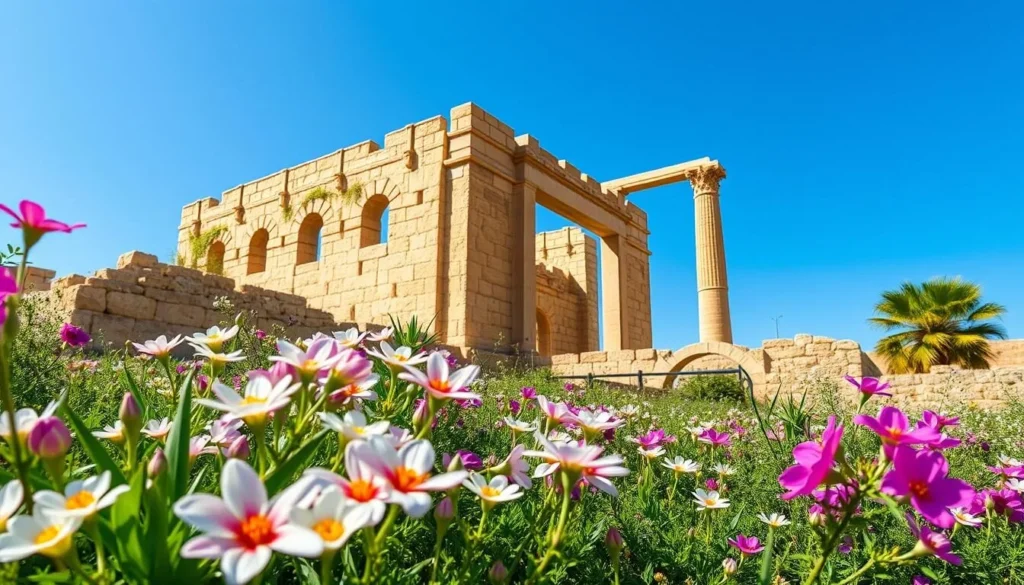
Homs experiences a Mediterranean climate with continental influences. When planning your visit, consider these seasonal variations:
Spring (March to May)
Spring is widely considered the best time to visit Homs. Temperatures range from 15°C to 25°C (59°F to 77°F), creating perfect conditions for exploring historical sites and enjoying outdoor activities. The landscape blooms with wildflowers, adding vibrant colors to the city’s surroundings.
Summer (June to August)
Summers in Homs can be quite hot, with temperatures often exceeding 30°C (86°F). If you visit during this season, plan your outdoor activities for early morning or late afternoon, and stay hydrated. The advantage of summer is extended daylight hours for sightseeing.
Autumn (September to November)
Autumn offers another excellent window for visiting Homs, with mild temperatures ranging from 18°C to 28°C (64°F to 82°F). The city takes on beautiful fall colors, and tourist crowds are typically smaller than in spring.
Winter (December to February)
Winters in Homs are cool and can be rainy, with temperatures averaging between 5°C and 15°C (41°F to 59°F). This is the least recommended season for tourism, though you’ll find fewer visitors and potentially lower prices if you don’t mind the cooler weather.
Recommended months: April, May, September, and October offer the most pleasant weather for exploring Homs.
Months to avoid: July and August (extreme heat) and December to February (rainy season).
Getting Around Homs

Navigating Homs is relatively straightforward, though having a local guide is highly recommended both for safety and to enhance your cultural experience. Here are the main transportation options:
With a Tour Guide
The most common and recommended way to explore Homs is with a local guide arranged through your tour operator. They’ll typically provide transportation between sites and offer valuable historical and cultural context.
Taxis
Local taxis are available and relatively inexpensive, with a 1km journey costing around 1.26 USD. Always confirm the price before starting your journey, as meters are rarely used.
Public Transportation
While public buses do operate in Homs, they can be challenging for tourists to navigate without Arabic language skills. A one-way ticket costs approximately 0.18 USD.
Walking
Many of the attractions in Homs’ city center are within walking distance of each other. Walking allows you to experience the city’s atmosphere and discover hidden gems, but always consult with your guide about which areas are safe to explore on foot.
Where to Stay in Homs

Accommodation options in Homs are limited compared to pre-war times, but several hotels have reopened to serve visitors. The New Basman Hotel is the most frequently recommended option for international travelers:
New Basman Hotel
Centrally located in Homs, the New Basman Hotel offers comfortable rooms with essential amenities including air conditioning and free Wi-Fi. The hotel features an on-site restaurant serving both local and international cuisine. Its central location makes it an ideal base for exploring the city’s attractions.
Features:
- Air-conditioned rooms
- Free Wi-Fi
- On-site restaurant
- Central location
- Helpful staff familiar with tourists’ needs
For those looking to stay outside the city, the Christian village of Al Mishtaya near Krak des Chevaliers offers the Villa Rosa Hotel, which provides a peaceful alternative with a pleasant evening atmosphere.
Travel Tip: When booking accommodation in Syria, it’s best to do so through your tour operator, as they can confirm availability and make arrangements directly with the hotel.
Dining & Local Cuisine in Homs

Syrian cuisine is renowned for its rich flavors and diverse influences. In Homs, you’ll find delicious local specialties that reflect the city’s cultural heritage. Here are some top dining recommendations:
Beyti Restaurant
Known for its luxurious ambiance and excellent Syrian cuisine, Beyti Restaurant is a must-visit for food enthusiasts in Homs. Their chicken with sauce and kebab dishes are particularly popular, perfectly marinated and cooked to bring out authentic Syrian flavors. The restaurant also serves excellent hummus as a starter or side dish.
Aboullaban Sweet Shop
No visit to Homs is complete without sampling Syrian sweets, and Aboullaban is widely regarded as the best sweet shop in the city. Their selection includes baklava (layered filo pastry with nuts and honey) and maamoul (shortbread pastries filled with dates, pistachios, or walnuts). Many visitors describe these as some of the best sweets they’ve ever tasted.
Must-Try Syrian Dishes
- Fateh – A hearty breakfast dish made with yogurt, chickpeas, fried bread, melted butter, and pine nuts
- Kebab Hindi – Meatballs cooked in a rich tomato sauce
- Muhammara – A spicy dip made from red peppers, walnuts, and pomegranate molasses
- Shawarma – Thinly sliced marinated meat wrapped in flatbread
- Falafel – Fried chickpea patties, often served in bread with vegetables and tahini
- Halawet El-jibn – A cheese-based sweet with cream filling, a specialty of Homs
Dining Tip: Meals in Homs are incredibly affordable by international standards. A simple meal costs around 3 USD, while a mid-range restaurant meal is approximately 6 USD.
Best Things to Do in Homs, Syria
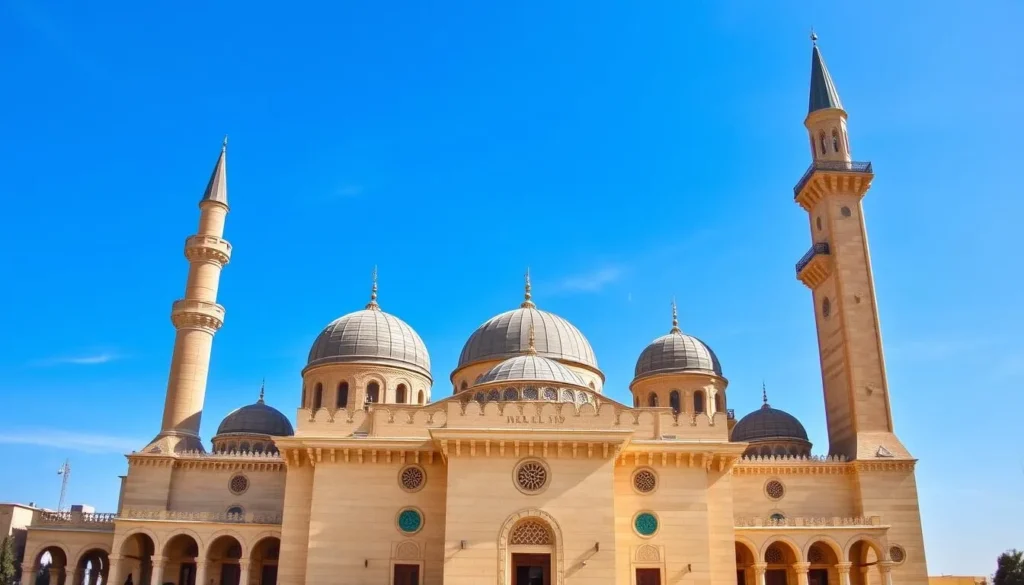
1. Visit the Khalid ibn al-Walid Mosque
The Khalid ibn al-Walid Mosque is one of the most iconic landmarks in Homs and a must-visit attraction. Named after the prominent Muslim commander Khalid ibn al-Walid, who is buried there, this magnificent mosque features a large dome, two striking minarets, and an expansive courtyard. The interior is adorned with intricate Islamic calligraphy and geometric patterns that create a serene and spiritual atmosphere.
2. Explore St. Mary Church of the Holy Belt
Also known as the Syriac Orthodox Church of Homs, this is one of the oldest and most significant Christian landmarks in Syria. The church is named after the Holy Belt of the Virgin Mary, a revered relic believed to have miraculous properties. The architecture blends ancient and modern styles, with beautiful frescoes and mosaics depicting biblical scenes. Visitors sometimes have the opportunity to witness religious ceremonies taking place.

3. Take a Half-Day Trip to Krak des Chevaliers
Located approximately 40 kilometers west of Homs, Krak des Chevaliers is one of the most important preserved medieval military castles in the world. Built by the Hospitaller Order of Saint John of Jerusalem from 1142 to 1271, this UNESCO World Heritage site offers panoramic views from its strategic hilltop position. The castle’s concentric design, with two defensive walls and a moat, showcases the evolution of fortified architecture during the Crusader period.

Explore Historical Sites Around Homs
Book a guided tour to Krak des Chevaliers and other historical treasures:
4. Experience Local Life in the City Squares
In the evenings, Homs’ city squares transform into vibrant social hubs where locals gather to enjoy performances by street musicians and artists. In the afternoons, you might find temporary amusement rides similar to European fairs. Food stalls sell local delicacies like shawarma and falafel, and you can try traditional tea or shisha. These squares offer a wonderful opportunity to witness everyday Syrian life and interact with friendly locals.

5. Day Trip to Palmyra
While requiring special permits and arrangements, a day trip to Palmyra from Homs is highly recommended for history enthusiasts. This ancient city dates back to the second millennium BCE and contains remarkable Roman-era ruins. Despite damage during recent conflicts, many structures including the amphitheater remain intact. The journey takes approximately 3 hours each way through the Syrian desert.
Practical Travel Tips for Visiting Homs
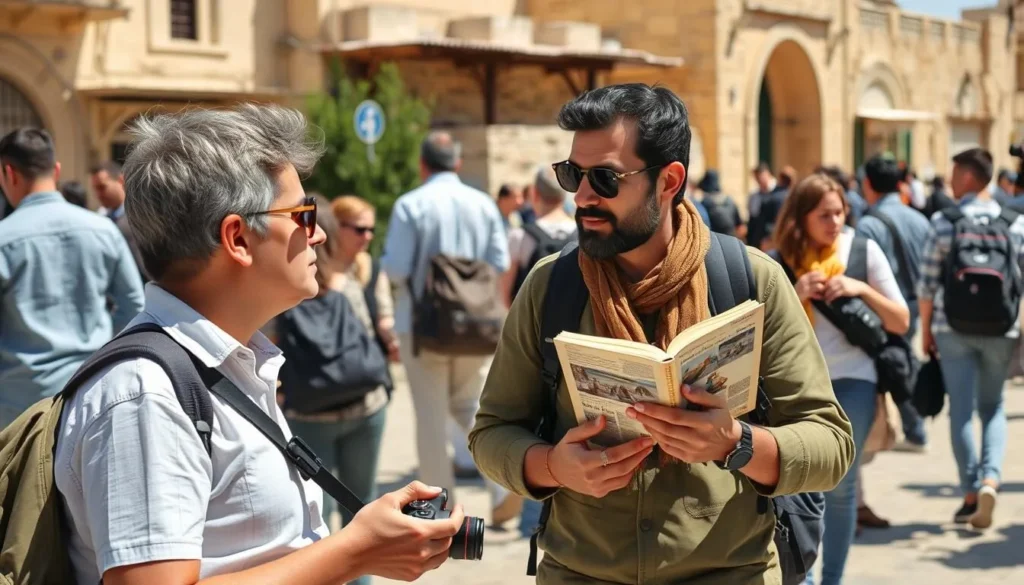
Safety Considerations
While the security situation in Homs has improved significantly in recent years, it’s essential to travel with a registered tour operator and guide. Areas open to tourists are considered safe, but it’s important to follow your guide’s advice at all times. You’ll likely encounter checkpoints and see military personnel throughout your journey, which are normal security measures.
Currency and Costs
The Syrian pound (SYP) is the local currency. Prices in Homs are very affordable by international standards:
- Simple meal: 3.08 USD
- Mid-range meal: 6.18 USD
- Bottle of water: 0.41 USD
- Public transport (one-way): 0.18 USD
- Taxi (1km): 1.26 USD
Bring cash (USD or EUR) as credit cards are rarely accepted, and ATMs may not be reliable.
Cultural Etiquette
Syrians are known for their exceptional hospitality. When visiting Homs, consider these cultural norms:
- Dress modestly, especially when visiting religious sites (women should cover shoulders and knees, and bring a scarf for mosque visits)
- Ask permission before photographing people
- Remove shoes when entering homes or certain religious buildings
- Accept offers of tea or coffee as a gesture of hospitality
- Avoid public displays of affection
Communication
Arabic is the official language in Syria. While English may be spoken in tourist areas and by your guide, learning a few basic Arabic phrases will be appreciated by locals. Consider purchasing a local SIM card through your tour operator for internet access during your stay.
Need Transportation in Syria?
Book your rental car for exploring the region around Homs:
Final Thoughts on Visiting Homs

Homs offers visitors a unique opportunity to witness both ancient history and remarkable resilience. From the magnificent Khalid ibn al-Walid Mosque to the nearby wonder of Krak des Chevaliers, the city provides a fascinating glimpse into Syria’s rich cultural heritage. What makes a visit to Homs truly special, however, is the warmth and hospitality of its people, who welcome visitors with open arms despite the challenges they’ve faced.
While traveling to Syria requires careful planning and consideration, those who make the journey to Homs will be rewarded with authentic experiences far from the beaten tourist path. As the city continues to rebuild and recover, visitors have the chance to not only explore remarkable historical treasures but also to connect with local people and contribute positively to the region’s future.
Whether you’re drawn by the ancient history, architectural wonders, or the opportunity to experience genuine Syrian hospitality, Homs offers a travel experience that will leave a lasting impression.
The above is subject to change.
Check back often to TRAVEL.COM for the latest travel tips and deals.




